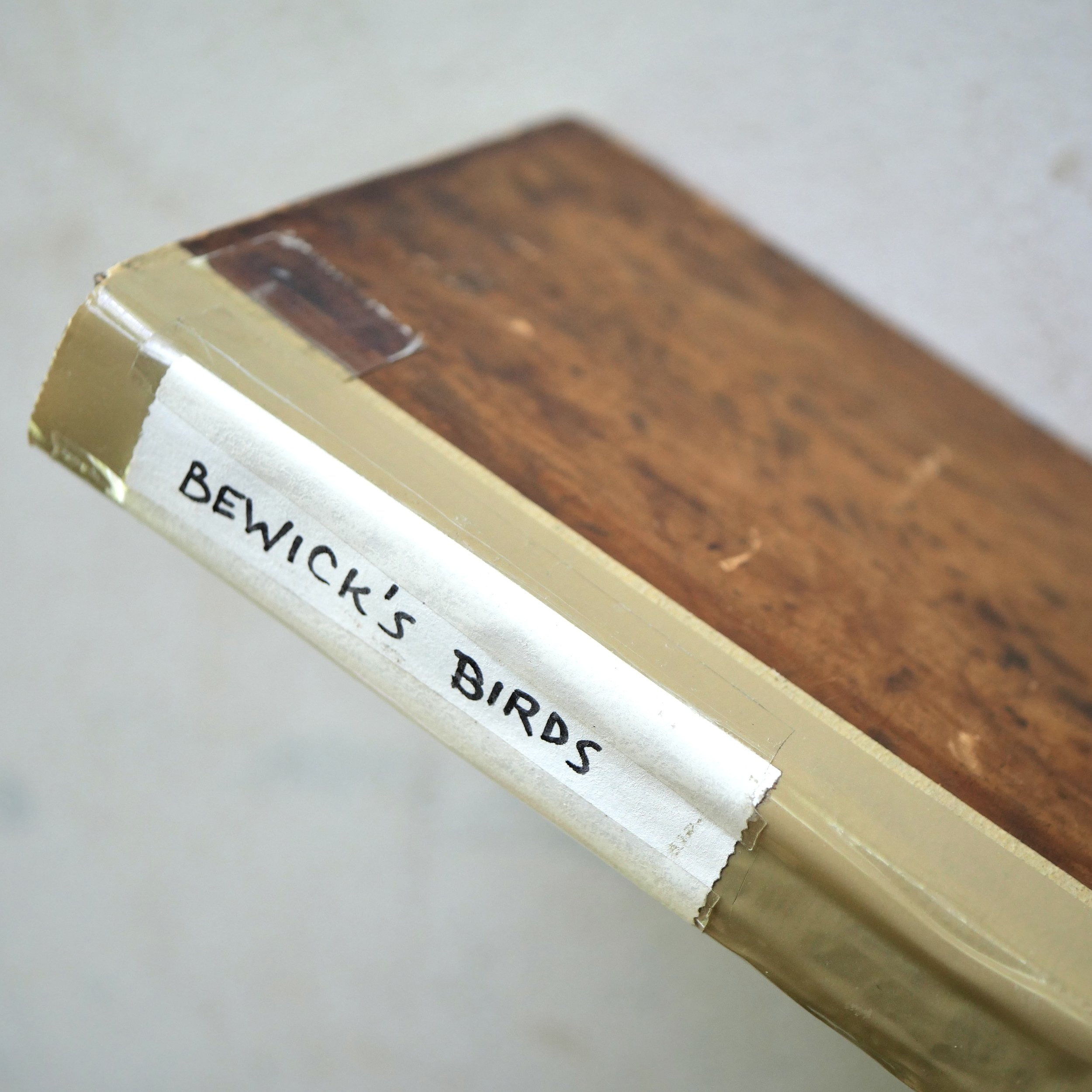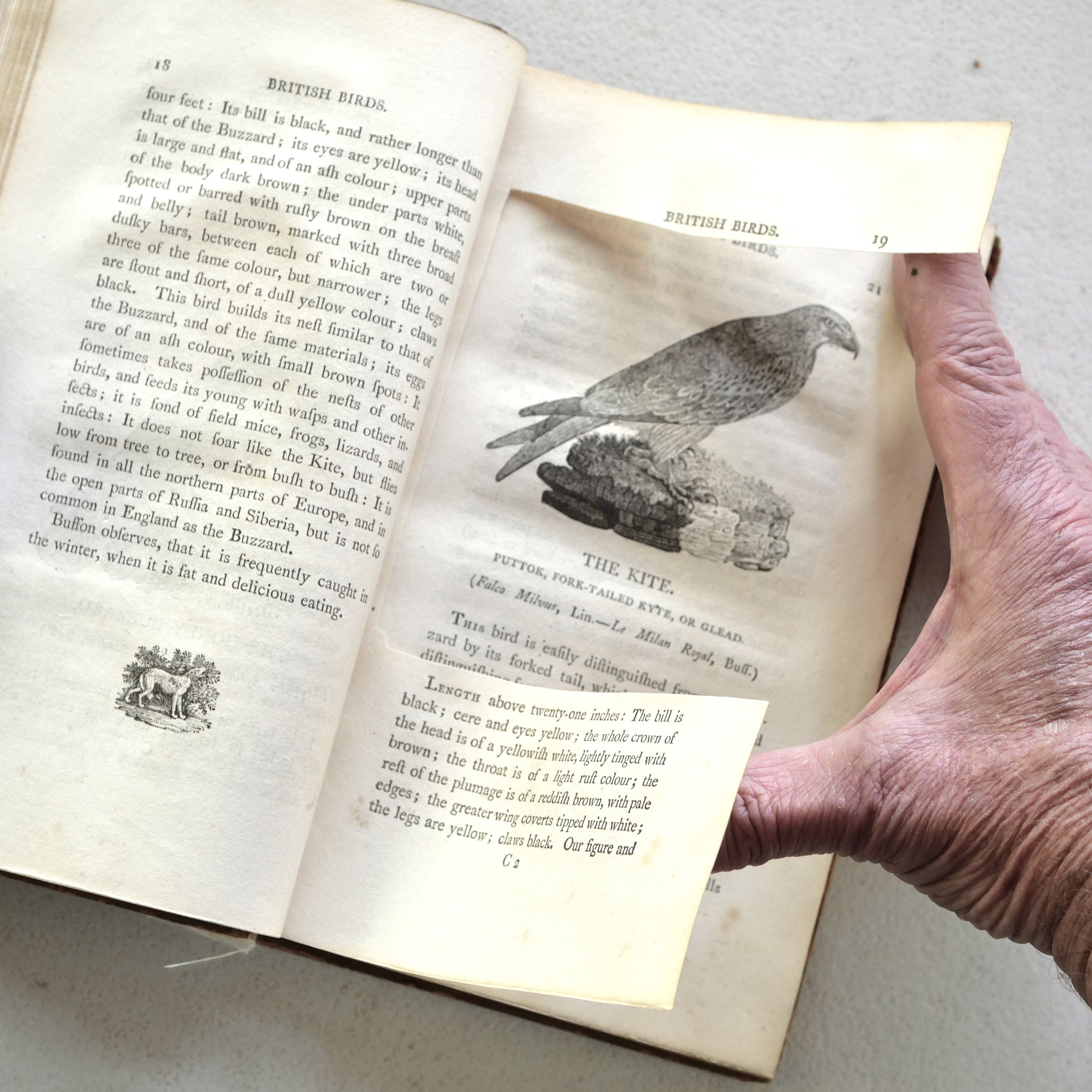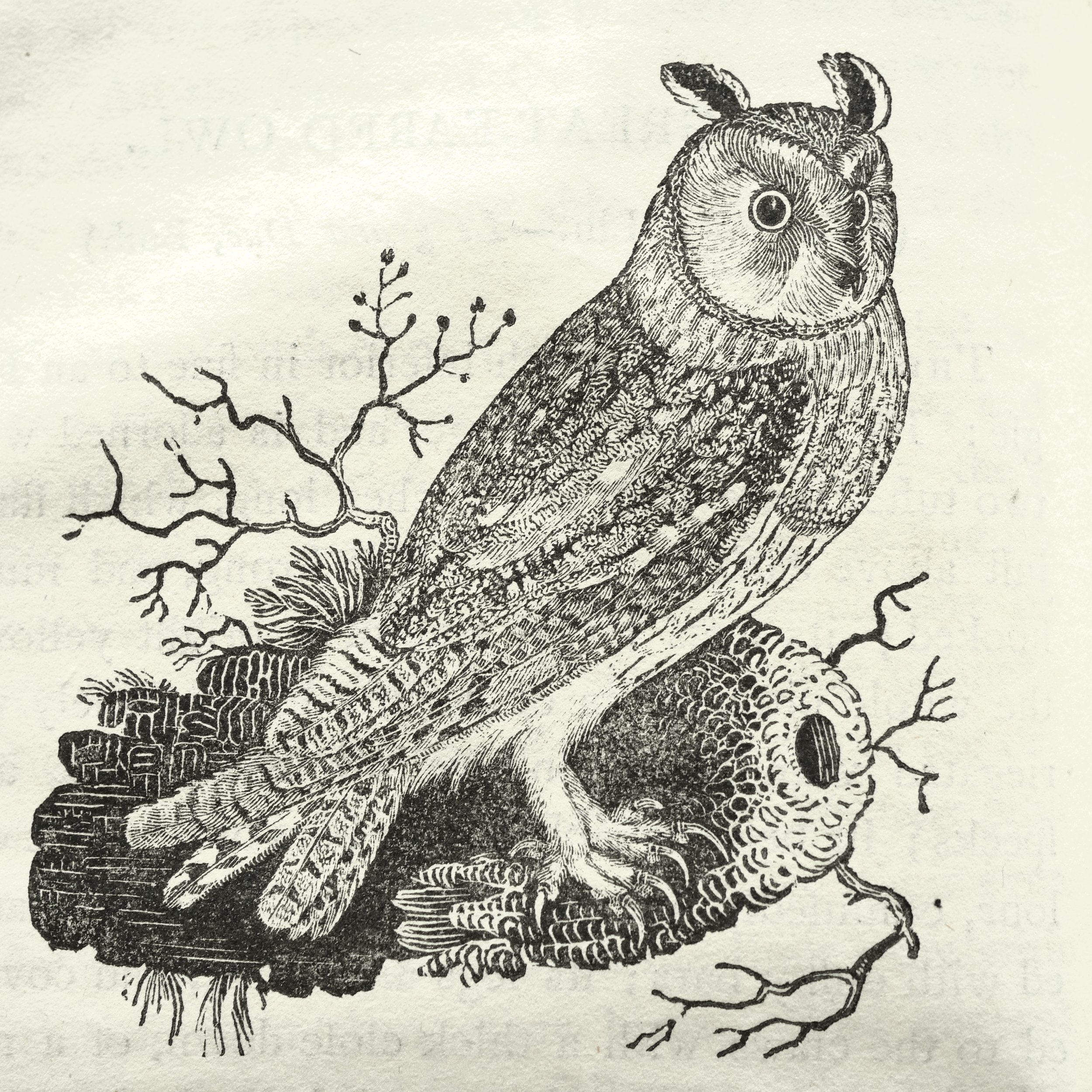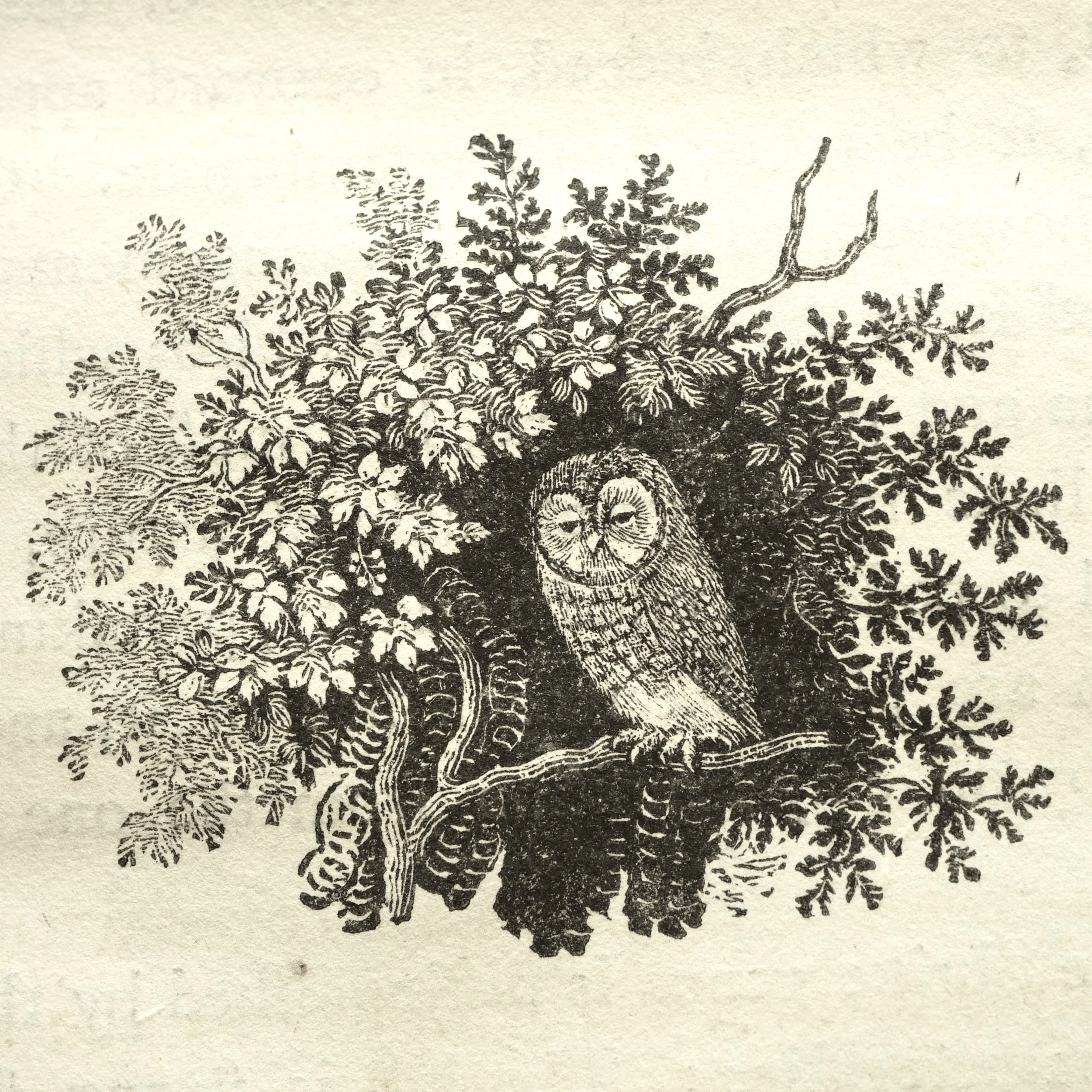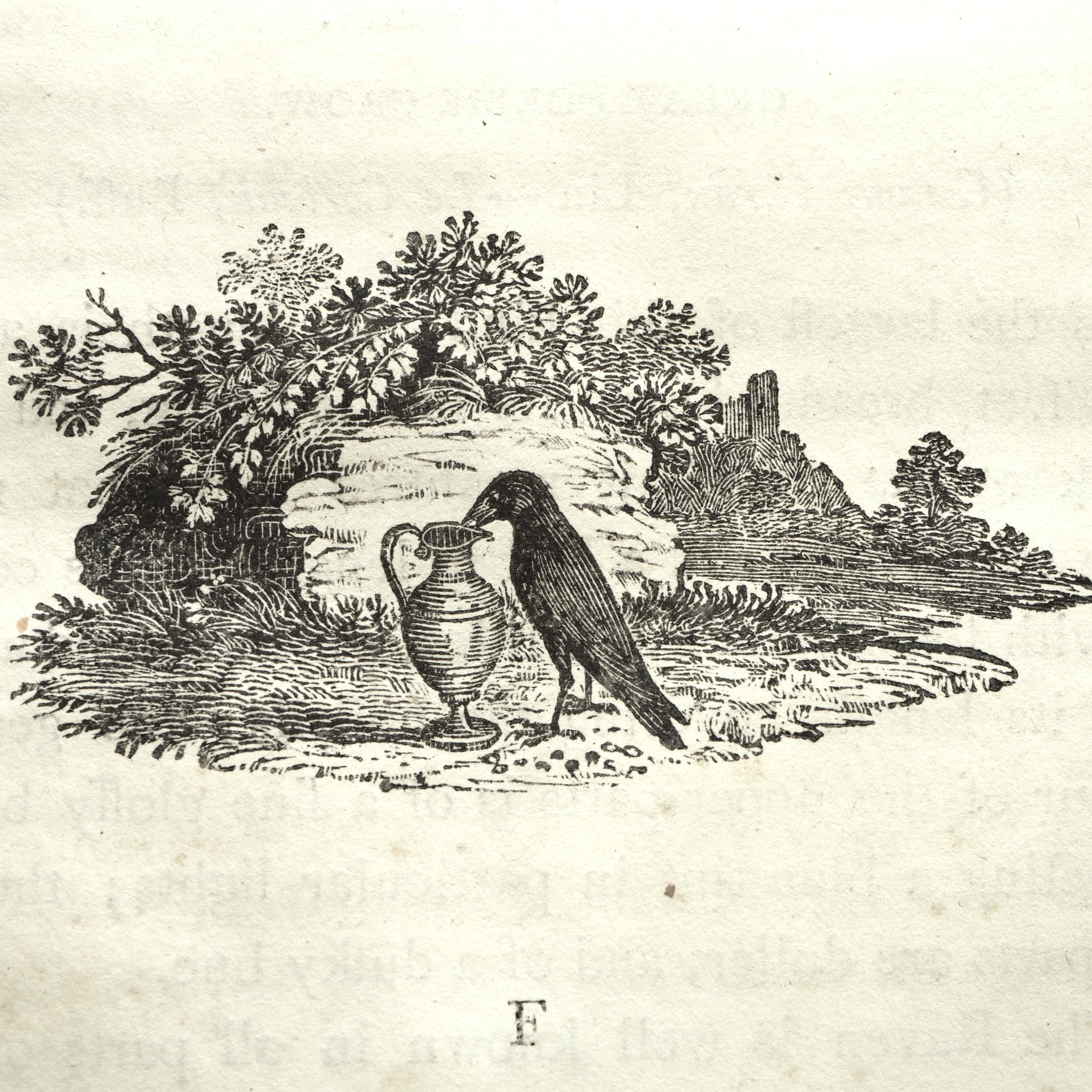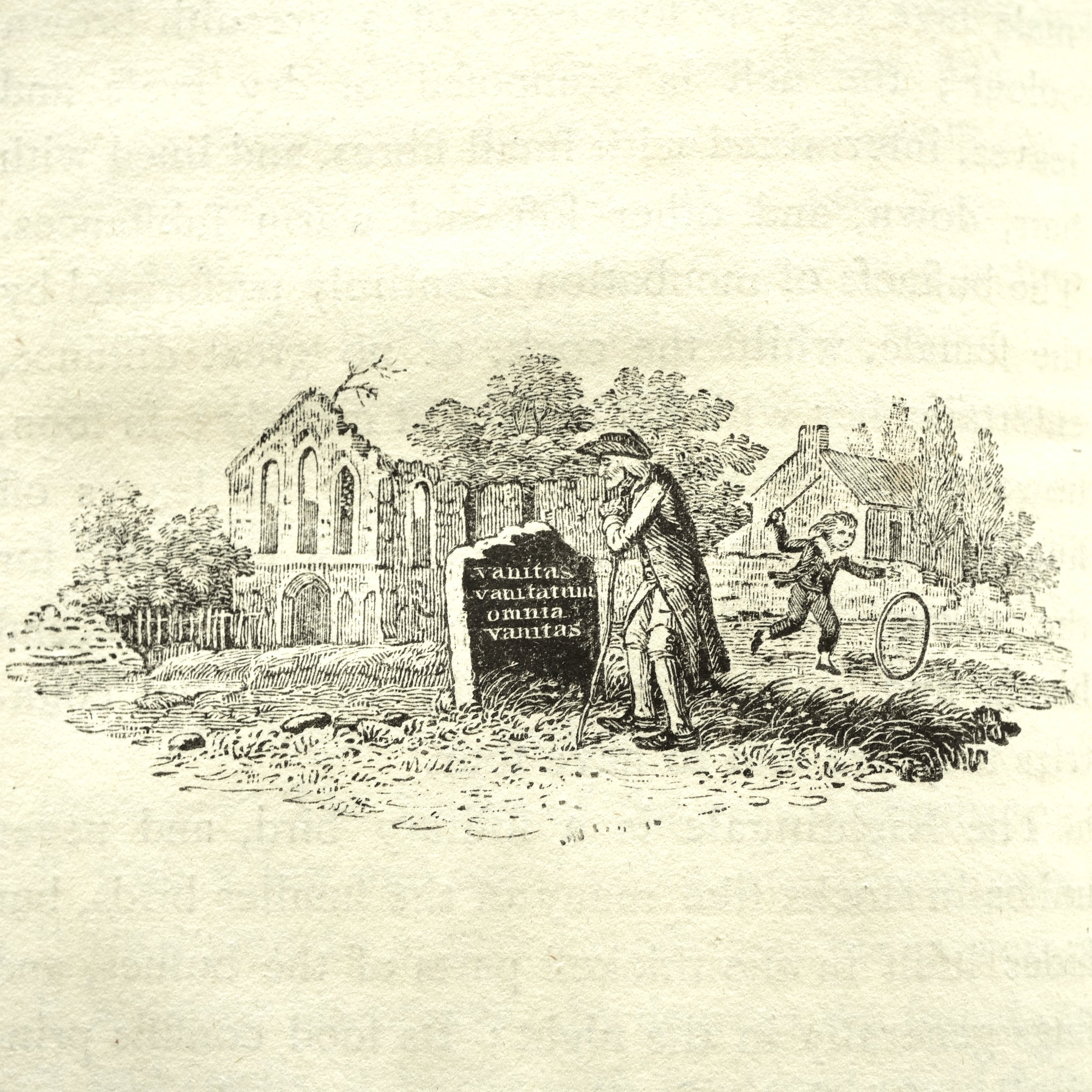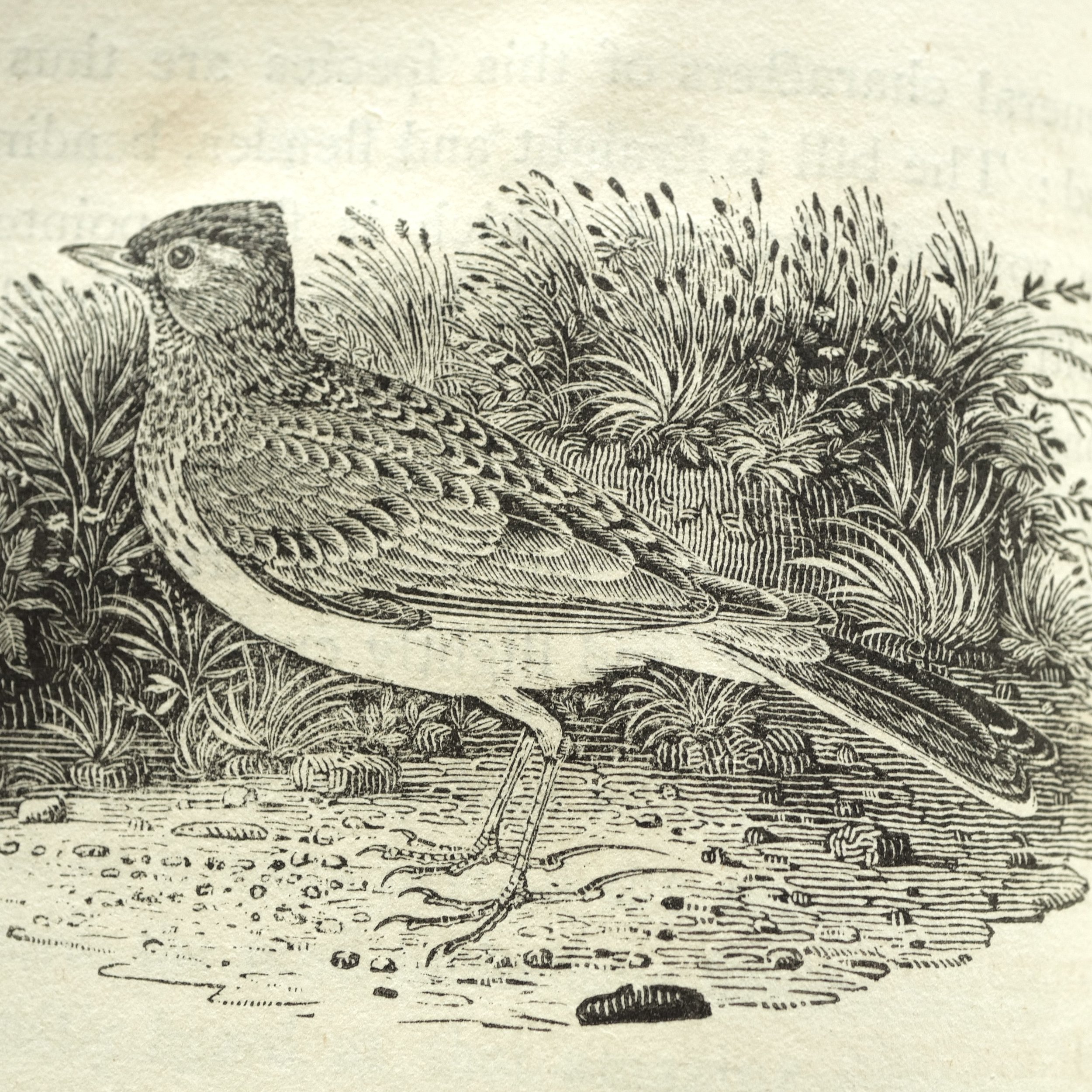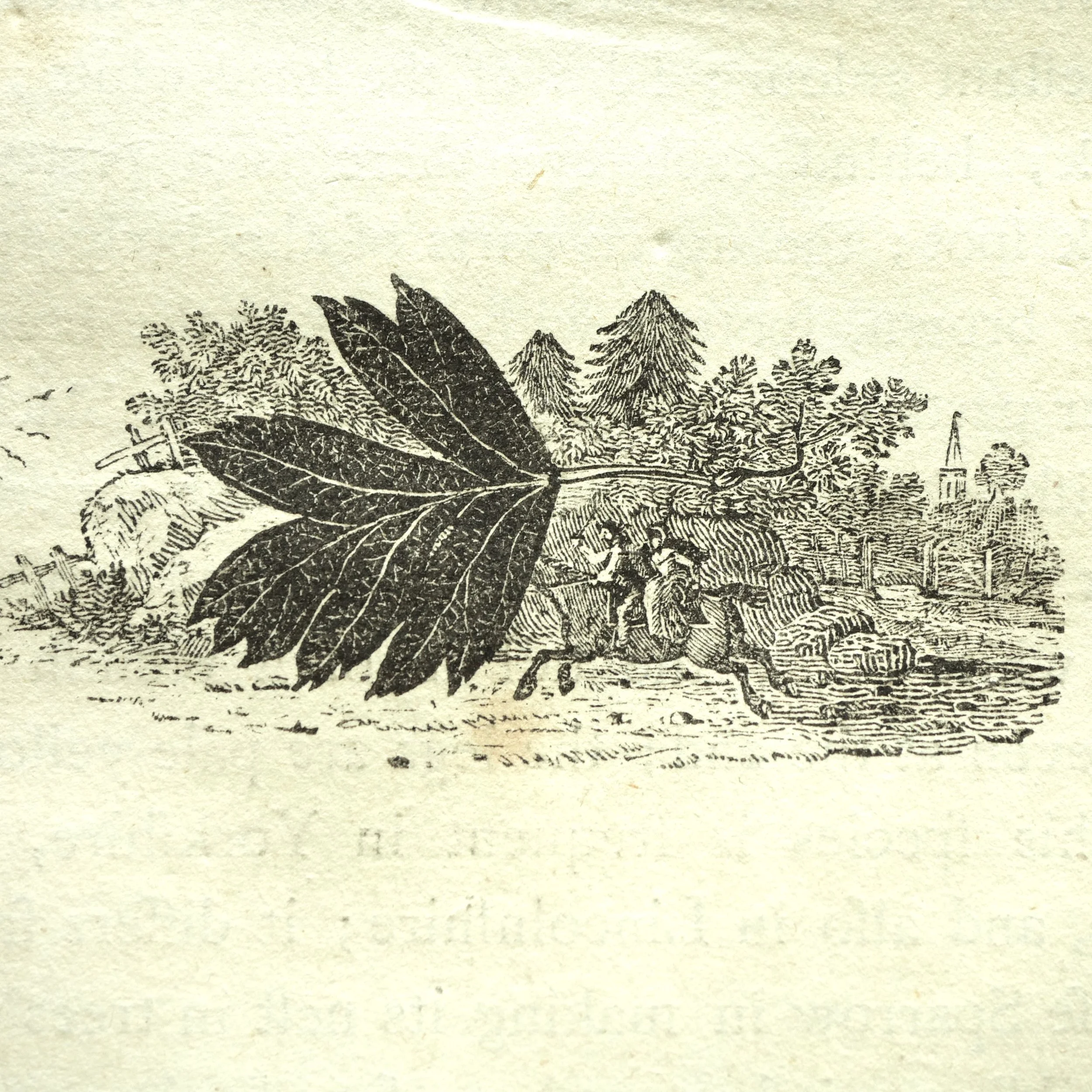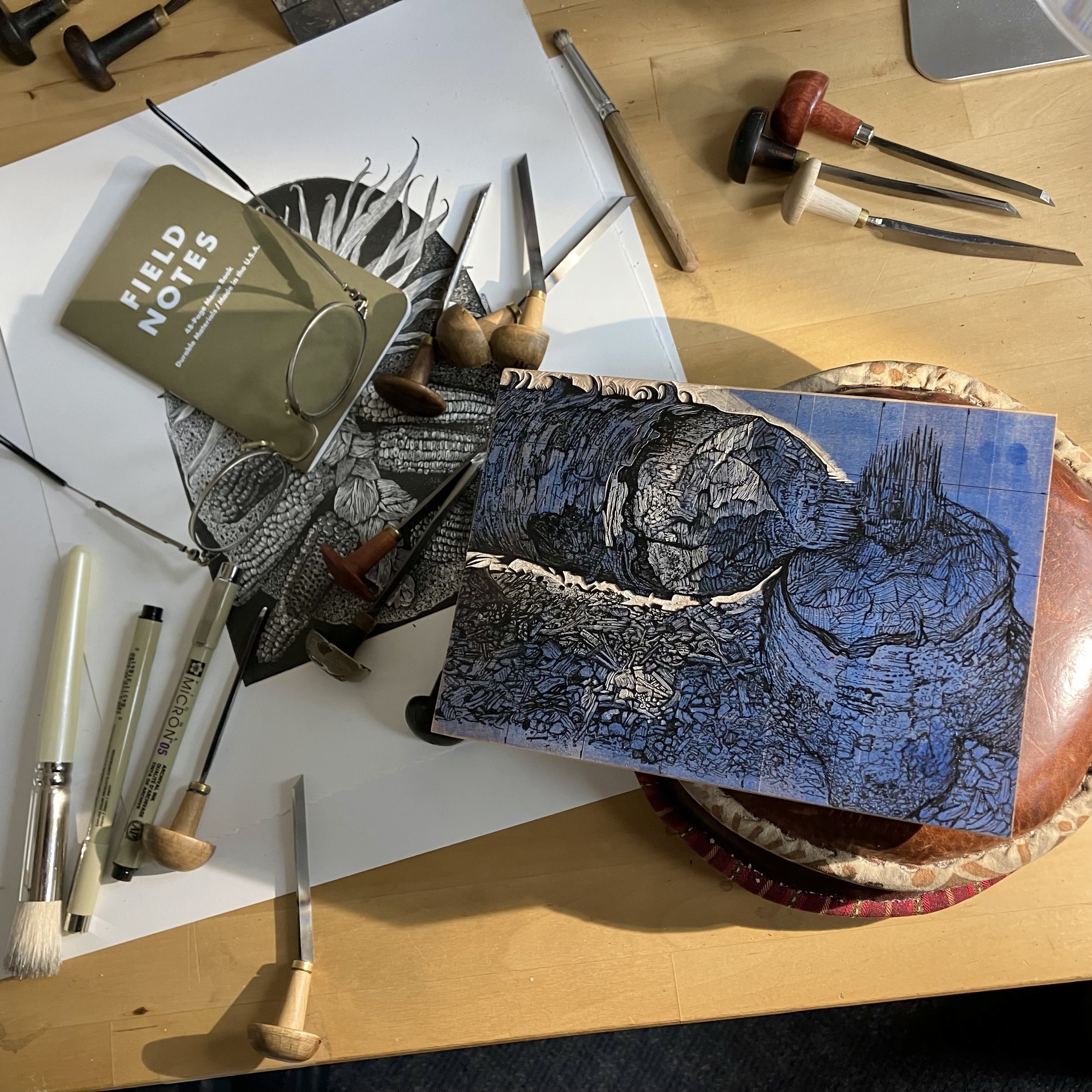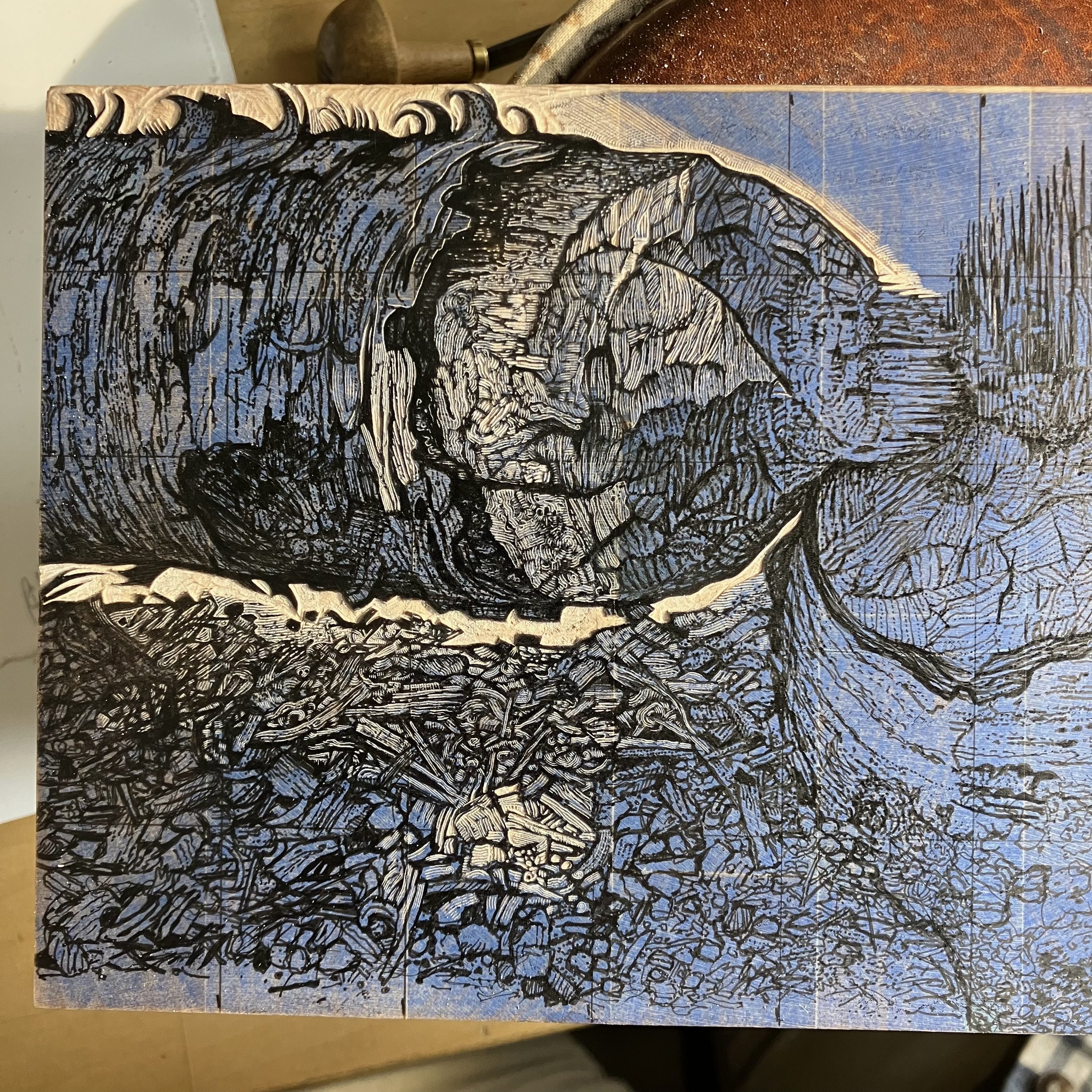I look for books with Thomas Bewick’s wood engravings, printed in his lifetime. My focus now is to find books that are in terrible shape, with covers missing and falling apart, but having the engravings printed nicely and with minimum foxing. The reason, I would love to someday help get a traveling exhibition together featuring Bewick’s wood engravings, his quadrupeds, birds and tail-pieces. I recently acquired at a falling apart bargain price, copy of “A History of British Birds” (Land Birds)” 2nd Edition, 1798. The book matches my needs, as about 8 wood engravings have already been cut out of the book. The book was in the Dover Publications Archives Library, and the bird engravings cut out from it most likely was used for reproduction in one of their Illustration books. Over years I have acquired other Bewick books, but just can’t cut them apart. Those I have had rebound, so worth preserving, as nothing compares to viewing an engraving, printed from the blocks, that were inked 197-234 years ago.
Quite professional, this bookbinding repair.
The title page was missing, so I needed to research a little to figure out what edition this volume was.
Here one of the cut-out windows, the bird most likely photographically reproduced in a pre-scanner era.
One of many small images, engraved beautifully, About 2”x 1”. Two of my recent wood engravings feature nests.
The Long-Eared Owl
2 1/4” by 1 3/4” (roughly)
Another small image, as you can see by the type printed on the other side of the paper. This a Tail-piece. (You can look up what that is!)
Beautiful.
A detail of The Golden Eagle. I once held the block that printed it, in Newcastle.
Getting older, I can relate to this. You start looking up latin words viewing Bewick’s tale-pieces.
Bewick, quite creative, dropping a leaf onto the image.
Another tail-piece, this one showing a bird’s nemesis.
